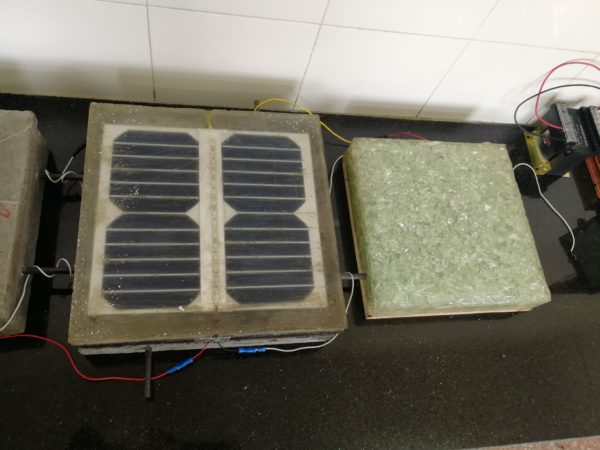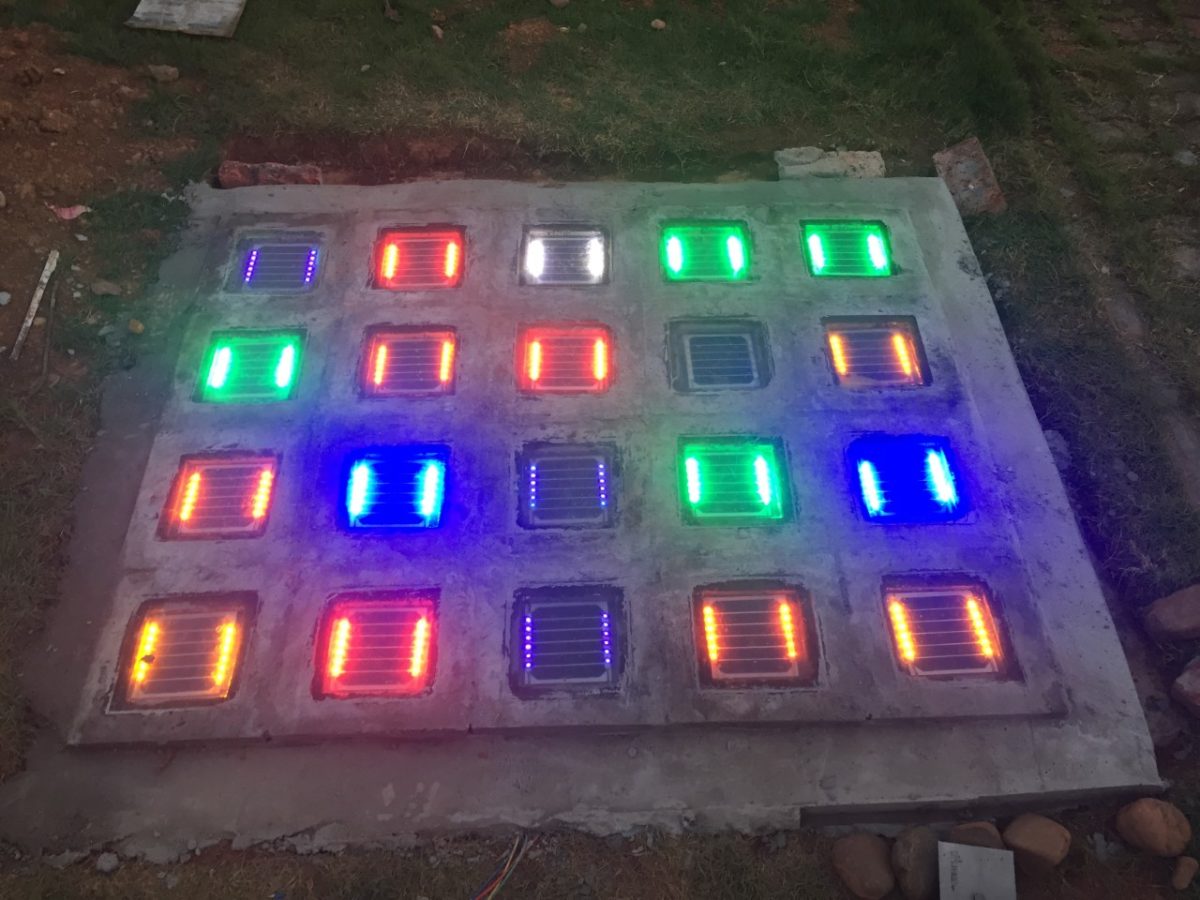A group of researchers in China has developed a prototype of a photovoltaic pavement for road applications.
“The system is not yet ready for commercial production, as it has only been tested indoors and no road has been paved to prove its long-term durability,” the research's corresponding author, Xudong Zha, told pv magazine.
The pavement was built with a transparent resin-concrete material made with waste glass and unsaturated polyester resin, with the latter being used as cementing material, as well as a curing agent and accelerator. “The transparent resin-concrete completely encapsulates the solar panel module, forming a whole and increasing the stability of the structure,” the scientists claimed, referring to the mechanical stress that pavement PV systems have to endure when they come in contact with vehicles or persons.
The system was equipped with built-in amorphous silicon solar modules. The modules are built with 130x120mm solar cells and have a size of 150x150x2mm. Their rated power is 3W and the power conversion efficiency reaches 15.51%. The resin pouring body has an irradiance ratio of 88.3%, a brightness ratio of 88.2%, and an open-circuit ratio of 97.5%.
The compressive strength of the 100×100×25mm prototype was measured using a microcomputer-controlled electro-hydraulic servo pressure-testing machine and its optical properties were measured in a dark room.

Image: Changsha University of Science and Technology
The daily power generation of the solar pavement module was found to be 0.152 kWh/m2, which is about 16.28% of the original solar panel. The scientists specified that the low power-generation efficiency of the solar pavement module was due to the low solar irradiance of the testing location in Changsha, Central China, in November, as well as to the loss of light caused by the reflection of the module surface, the light loss through the transparent resin-concrete, and the heat released during resin curing, which may have had some effect on the solar panel.
“To improve the power-generation efficiency of the solar pavement module, solar panels with high conversion efficiency such as a combination of plexiglass, transparent silicone resin, and monocrystalline silicon should be used,” the scientists further explained. “In addition, because the output power of the solar panels varies with the changing irradiance, in areas with large irradiance and annual sunshine such as Tibet, Xinjiang, China, power generation will be more efficient.”
The proposed system is said to achieve a levelized cost of energy of $0.175/kWh, which is claimed to make the solar pavement cost-effective compared to other types of solar pavement. “Although the investment cost of transparent resin-concrete solar pavement is higher than cement pavement and asphalt pavement in the early stage, its intangible economic, environmental influences and social benefits are considerable in the long run,” the academics concluded.
Their findings were presented in the study Preparation and performance study of solar pavement panel based on transparent Resin-Concrete, published in Sustainable Energy Technologies and Assessments.
This content is protected by copyright and may not be reused. If you want to cooperate with us and would like to reuse some of our content, please contact: editors@pv-magazine.com.




2 comments
By submitting this form you agree to pv magazine using your data for the purposes of publishing your comment.
Your personal data will only be disclosed or otherwise transmitted to third parties for the purposes of spam filtering or if this is necessary for technical maintenance of the website. Any other transfer to third parties will not take place unless this is justified on the basis of applicable data protection regulations or if pv magazine is legally obliged to do so.
You may revoke this consent at any time with effect for the future, in which case your personal data will be deleted immediately. Otherwise, your data will be deleted if pv magazine has processed your request or the purpose of data storage is fulfilled.
Further information on data privacy can be found in our Data Protection Policy.